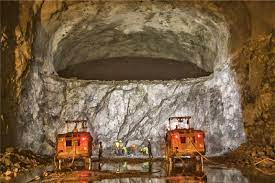Strategic Petroleum Reserves (SPR) Programme:

Under the Strategic Petroleum Reserves (SPR) programme, the government has given approval for establishing two additional facilities.
- In 2020, India filled its strategic petroleum reserves in view of the slump in crude prices.
- The new facilities will be commercial-cum-strategic facilities with a total storage capacity of 6.5 MMT (Million Metric Ton) underground storages at:
- Chandikhol, Odisha (4 MMT)
- Padur, Karnataka (2.5 MMT)
- They will be built in Public Private Partnership mode under phase II of the SPR Programme.
- Existing Facilities:
- Under Phase I of the Programme, Government of India has established petroleum storage facilities with total capacity of 5.33 MMT at 3 locations:
- Visakhapatnam, Andhra Pradesh (1.33 MMT).
- Mangaluru, Karnataka (1.5 MMT).
- Padur, Karnataka (2.5 MMT).
- Under Phase I of the Programme, Government of India has established petroleum storage facilities with total capacity of 5.33 MMT at 3 locations:
- The petroleum reserves established under Phase I are strategic in nature and the crude oil stored in these reserves will be used during an oil shortage event, as and when declared so by the Government of India.
About Strategic Petroleum Reserves:
- Strategic petroleum reserves are huge stockpiles of crude oil to deal with any crude oil-related crisis like the risk of supply disruption from natural disasters, war or other calamities.
- According to the agreement on an International Energy Programme (I.E.P.), each International Energy Agency (IEA) country has an obligation to hold emergency oil stocks equivalent to at least 90 days of net oil imports.
- In case of a severe oil supply disruption, IEA members may decide to release these stocks to the market as part of a collective action.
- India became an associate member of the IEA in 2017.




